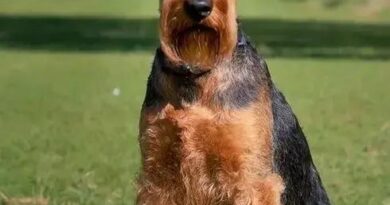What is Low-shedding dogs
What Are Low-Shedding Dogs?
Low-shedding dogs are breeds that produce minimal amounts of fur and dander, making them ideal for individuals with allergies or those who prefer a cleaner home environment. These dogs typically have hair that is more similar to human hair, which means they shed less frequently and in smaller quantities. Understanding what low-shedding dogs are can help potential pet owners make informed decisions when choosing a canine companion.
Characteristics of Low-Shedding Dogs
Low-shedding dogs often possess unique characteristics that set them apart from other breeds. Their coats may be curly, wavy, or have a finer texture, which helps to trap loose hair and dander, preventing it from spreading throughout the home. Breeds such as Poodles, Bichon Frises, and Shih Tzus are well-known for their low-shedding qualities, making them popular choices for families and individuals alike.
Benefits of Owning Low-Shedding Dogs
One of the primary benefits of owning low-shedding dogs is the reduced amount of pet hair in the home. This can lead to fewer allergy flare-ups for sensitive individuals and less time spent cleaning up after your furry friend. Additionally, low-shedding breeds often require regular grooming, which can be a bonding experience between the pet and owner, enhancing the overall relationship.
Common Low-Shedding Dog Breeds
Several dog breeds are recognized for their low-shedding traits. Some of the most popular include the Maltese, Yorkshire Terrier, and the Schnauzer. Each of these breeds has its own unique personality and care requirements, but they all share the common trait of minimal shedding, making them suitable for various lifestyles and living situations.
Grooming Needs of Low-Shedding Dogs
While low-shedding dogs may not leave fur all over your furniture, they still require regular grooming to maintain their coats and overall health. Brushing is essential to prevent matting and to remove any loose hair or dander that may accumulate. Depending on the breed, professional grooming may also be necessary to keep their coats in optimal condition.
Low-Shedding Dogs and Allergies
For allergy sufferers, low-shedding dogs can be a great option. While no dog is completely hypoallergenic, low-shedding breeds tend to produce fewer allergens, making them more suitable for individuals with sensitivities. It’s important to spend time with a breed before bringing one home to ensure compatibility with your allergies.
Training Low-Shedding Dogs
Training low-shedding dogs is similar to training any other breed, but their intelligence and eagerness to please can make the process smoother. Many low-shedding breeds are highly trainable and respond well to positive reinforcement techniques. Consistent training can help establish good behavior and strengthen the bond between the dog and its owner.
Low-Shedding Dogs in Different Lifestyles
Low-shedding dogs can adapt to various lifestyles, whether you live in a small apartment or a large house. Their size and energy levels vary by breed, allowing potential owners to find a low-shedding dog that fits their living situation. Additionally, many low-shedding breeds are known for their friendly and sociable nature, making them great companions for families and singles alike.
Health Considerations for Low-Shedding Dogs
Like all dogs, low-shedding breeds can be prone to certain health issues. Regular veterinary check-ups, a balanced diet, and proper exercise are essential to ensure their well-being. Being aware of breed-specific health concerns can help owners take proactive steps to maintain their pet’s health and longevity.
Finding the Right Low-Shedding Dog for You
When searching for the perfect low-shedding dog, consider factors such as size, energy level, and grooming needs. Researching different breeds and meeting them in person can help you determine which low-shedding dog aligns best with your lifestyle and preferences. Adopting from shelters or breed-specific rescues can also be a rewarding way to find your new furry friend.



